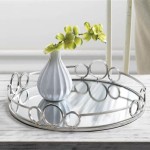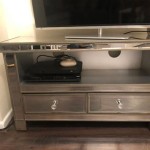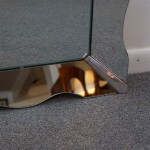How to Glue Mirror to a Wood Wall: A Comprehensive Guide
Adhering a mirror to a wood wall appears simple, but achieving a lasting, aesthetically pleasing result requires careful planning, preparation, and execution. This guide provides a detailed walkthrough of the process, covering essential materials, necessary preparations, and various techniques to ensure a secure and visually impressive installation.
The success of adhering a mirror to wood relies on several factors. These include the suitability of the wood surface, the selection of an appropriate adhesive, and the implementation of support measures during the curing process. Ignoring these critical elements can lead to detachment, slippage, or even damage to the mirror.
Assessing the Wood Surface
Prior to commencing any project, the condition of the wood wall must be thoroughly evaluated. The type of wood, its finish, and its overall structural integrity all play significant roles in determining the appropriate installation method and necessary preparations.
Wood that is excessively porous, uneven, or coated with a weak or flaking finish requires thorough preparation. Porous surfaces can absorb excessive amounts of adhesive, hindering its ability to form a strong bond with the mirror. Uneven surfaces create gaps, compromising the adhesive's effectiveness and potentially distorting the mirror's reflection. Weak finishes may detach under the stress of the adhesive, leading to failure.
The wood substrate must be structurally sound to support the weight of the mirror without deflection. Consider the dimensions and weight of the mirror to ensure the wall can handle the load. Examine the wood for signs of rot, insect infestation, or water damage, as these conditions weaken the wood and can compromise the adhesive bond.
Clean the wood surface to remove dust, dirt, grease, and any loose particles. Use a mild detergent solution and a clean cloth to scrub the area thoroughly. Rinse with clean water and allow the wood to dry completely before proceeding.
If the wood finish is glossy or non-porous, lightly sanding the surface with fine-grit sandpaper (120-180 grit) will create a better surface for the adhesive to grip. Be careful not to sand through the existing finish, as this could damage the underlying wood. Remove any sanding dust with a tack cloth before applying the adhesive.
Priming the wood surface with a suitable primer can enhance adhesion and ensure a uniform surface for the adhesive. Choose a primer compatible with both the wood and the adhesive. Apply the primer according to the manufacturer's instructions, allowing it to dry completely before proceeding.
Selecting the Correct Adhesive
Choosing the right adhesive is paramount to the success of a mirror installation. Not all adhesives are created equal, and using an inappropriate product can result in failure and potential hazards. Mirror-specific adhesives are formulated to avoid damaging the mirror's backing and to provide a strong, permanent bond.
Mirror mastic is a commonly used adhesive specifically designed for adhering mirrors to various surfaces, including wood. It offers excellent adhesion, flexibility, and resistance to moisture, making it suitable for bathroom and other high-humidity environments. Always verify that the mirror mastic is compatible with the silvering on the back of the mirror to prevent discoloration or damage.
Construction adhesives, such as those based on polyurethane or modified silane polymers, can also be used to adhere mirrors to wood. These adhesives offer strong bonding, good gap-filling properties, and resistance to environmental factors. Verify that the chosen construction adhesive is specifically labeled as safe for use with mirrors, as some formulations can damage the mirror's backing.
Avoid using standard silicone sealants or adhesives designed for general-purpose applications. These products typically lack the necessary adhesion strength and chemical compatibility to ensure a reliable and lasting bond with the mirror.
Regardless of the adhesive type, always follow the manufacturer's instructions carefully. The instructions will provide specific guidance on surface preparation, application techniques, curing times, and safety precautions. Failure to follow these instructions can significantly compromise the bond's strength and durability.
When selecting an adhesive, consider the size and weight of the mirror. Larger and heavier mirrors require more robust adhesives with higher shear strength and holding power. Consult the adhesive manufacturer's specifications to ensure the product is suitable for the intended application.
Applying the Adhesive and Securing the Mirror
The adhesive application method influences the strength and longevity of the bond. Consistent and even adhesive distribution prevents weak spots and ensures uniform stress distribution across the mirrored surface.
Apply the chosen adhesive to the back of the mirror in vertical beads, spaced several inches apart. Ensure that the beads are continuous and of uniform thickness. Leave a small gap around the edges of the mirror to allow for ventilation and to prevent the adhesive from squeezing out when the mirror is pressed against the wall. Consult the adhesive manufacturer’s specifications concerning spacing and bead dimensions.
Alternatively, apply the adhesive to the wood wall instead of the mirror. This method can be advantageous when working with large or heavy mirrors, as it allows for easier positioning and alignment. Ensure that the adhesive is applied evenly and covers a sufficient area to provide adequate support for the mirror.
Carefully position the mirror against the wood wall, ensuring that it is level and aligned correctly. Apply firm and even pressure to the mirror, pressing it against the wall to ensure good contact with the adhesive. Avoid excessive pressure, which could damage the mirror or squeeze out too much adhesive.
Provide temporary support for the mirror while the adhesive cures. This support prevents the mirror from sliding or detaching during the curing process and ensures that the adhesive forms a strong, permanent bond. Several support options are available, depending on the size and weight of the mirror.
Mirror clips are commonly used to provide temporary support for mirrors. These clips are attached to the wall around the perimeter of the mirror, holding it in place while the adhesive cures. Choose clips that are compatible with the mirror's thickness and finish. After the adhesive has cured, the mirror clips can be removed or left in place for added security.
Painter's tape can also be used to provide temporary support for lighter mirrors. Apply strips of painter's tape across the mirror surface and onto the surrounding wall, providing additional hold. Ensure the tape is applied firmly and evenly to prevent the mirror from slipping. Remove the tape carefully after the adhesive has cured, avoiding damage to the wall or the mirror.
Wooden shims can be inserted between the bottom edge of the mirror and the floor to provide vertical support. These shims prevent the mirror from sliding downward during the curing process. Ensure the shims are properly positioned and provide adequate support without applying excessive pressure to the mirror.
Allow the adhesive to cure completely according to the manufacturer's instructions before removing any temporary supports. The curing time can vary depending on the type of adhesive, temperature, and humidity. Premature removal of the supports can compromise the bond strength and lead to detachment or slippage.
After removing the temporary supports, inspect the mirror installation for any signs of weakness or instability. Gently tug on the mirror to ensure that it is securely attached to the wall. If any movement or looseness is detected, provide additional support and allow the adhesive to cure further before proceeding.
Clean any excess adhesive from around the edges of the mirror with a clean cloth and appropriate solvent, following the adhesive manufacturer’s recommendations for cleanup. Be careful not to scratch or damage the mirror surface.
Caulk the perimeter of the mirror with a paintable acrylic latex caulk to seal any gaps and create a clean, finished look. The caulk also prevents moisture from penetrating behind the mirror, protecting the adhesive and the wood wall. Apply the caulk evenly and smoothly, tooling it with a wet finger or a caulking tool for a professional finish.

How To Glue A Heavy Mirror The Wall Mom Blog Society

Diy Mirror Frame The Faux Martha

How To Glue Wood A Mirror Surface Hunker

How To Remove A Large Mirror That S Glued The Wall Emerging Home

How To Hang A Mirror With No Slip Adhesive

How To Hang A Wall Mirror Easy Mounting Instructions

Mirror Frame Diy How To Update A Basic Bathroom Our Faux Farmhouse

Full Length Wood Bead Mirror Diy Thistlewood Farm

Mirror Frame Diy How To Update A Basic Bathroom Our Faux Farmhouse

How To Remove A Large Mirror That S Glued The Wall Emerging Home








